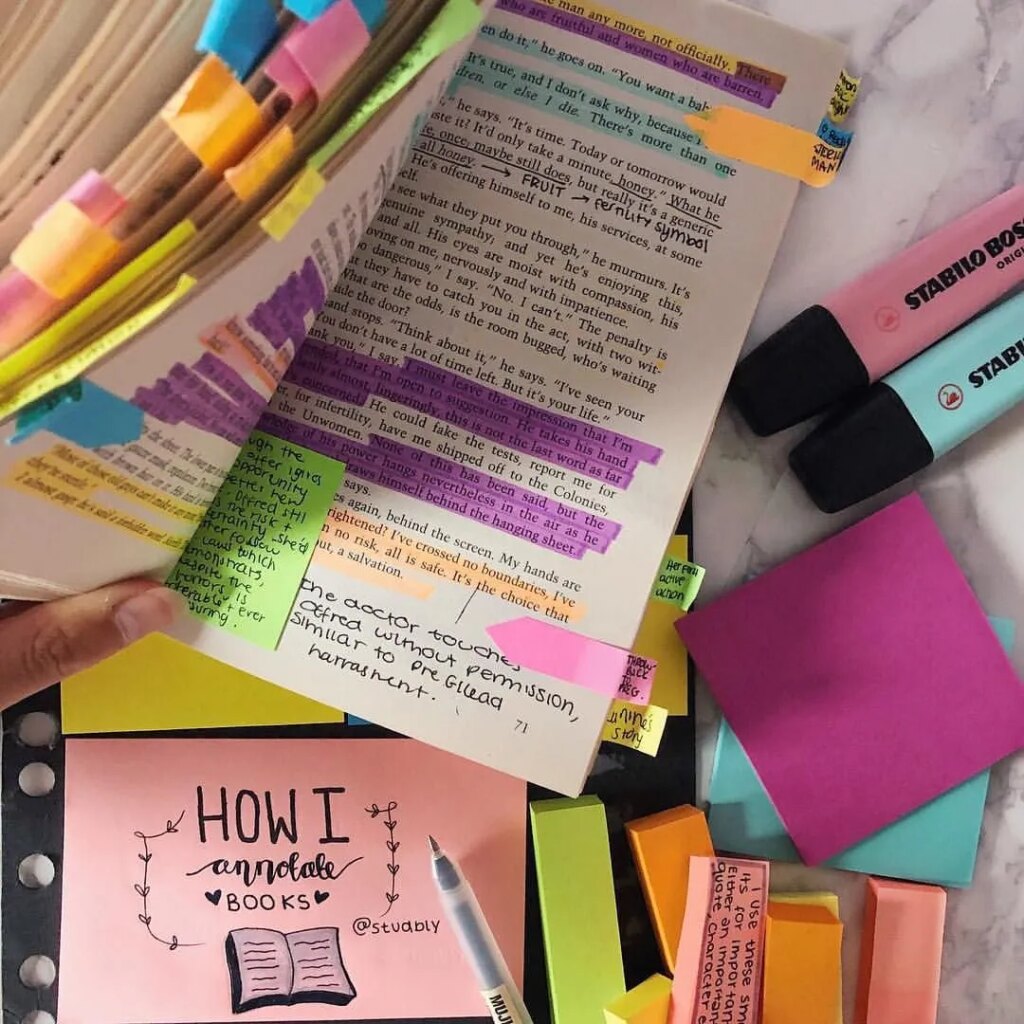Discover how annotating turns reading into a conversation. Underline, question, react, and make the book feel like your thoughts on paper.
You’ve probably seen them: books bursting with neon tabs, dog-eared pages, and scribbled margins. Or maybe you’ve spotted someone in a café, pen in hand, muttering at a paperback like they’re mid-debate.
What are they doing? Reading, yes, but not passively. They’re annotating. And if you’ve ever wondered what that’s about, or if it’s something you could give a go, then welcome. You’re in the right place.
Why Annotate at All?
Reading isn’t just about dragging your eyes across a line of text and flipping the page. At least, it doesn’t have to be. Sure, if that works for you, then great. But if you want to make reading that little bit… more, then annotation is for you.
Annotation takes a passive activity and turns it into a real conversation with the book. It’s about pausing to ask questions, underlining a line that hits too close to home, or scribbling “!!!” when something makes you stop and gasp or close the book and kick your feet.
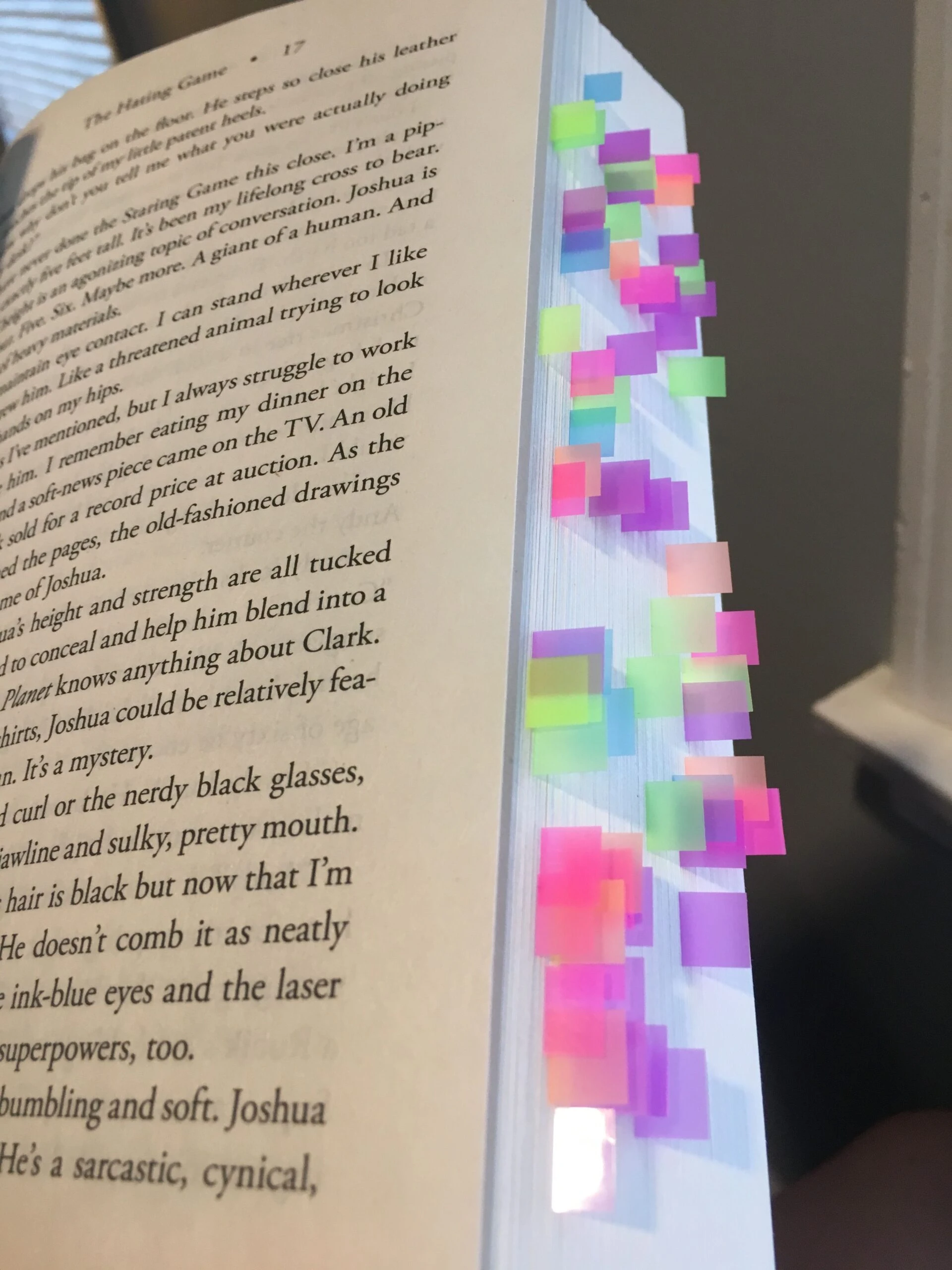
Think of it this way: annotation is kind of like leaving footprints behind. When you come back to the book (or someone else does), you won’t just see what was written. You’ll see how it made you feel, what it made you think, and maybe even how and where it changed you. You’ll see the lines that made the cogs in your brain turn, the sentences that made your heart sing and your stomach twist. It’s the best way to keep track of how you felt as you engaged with the author’s work!
So What Do You Need?
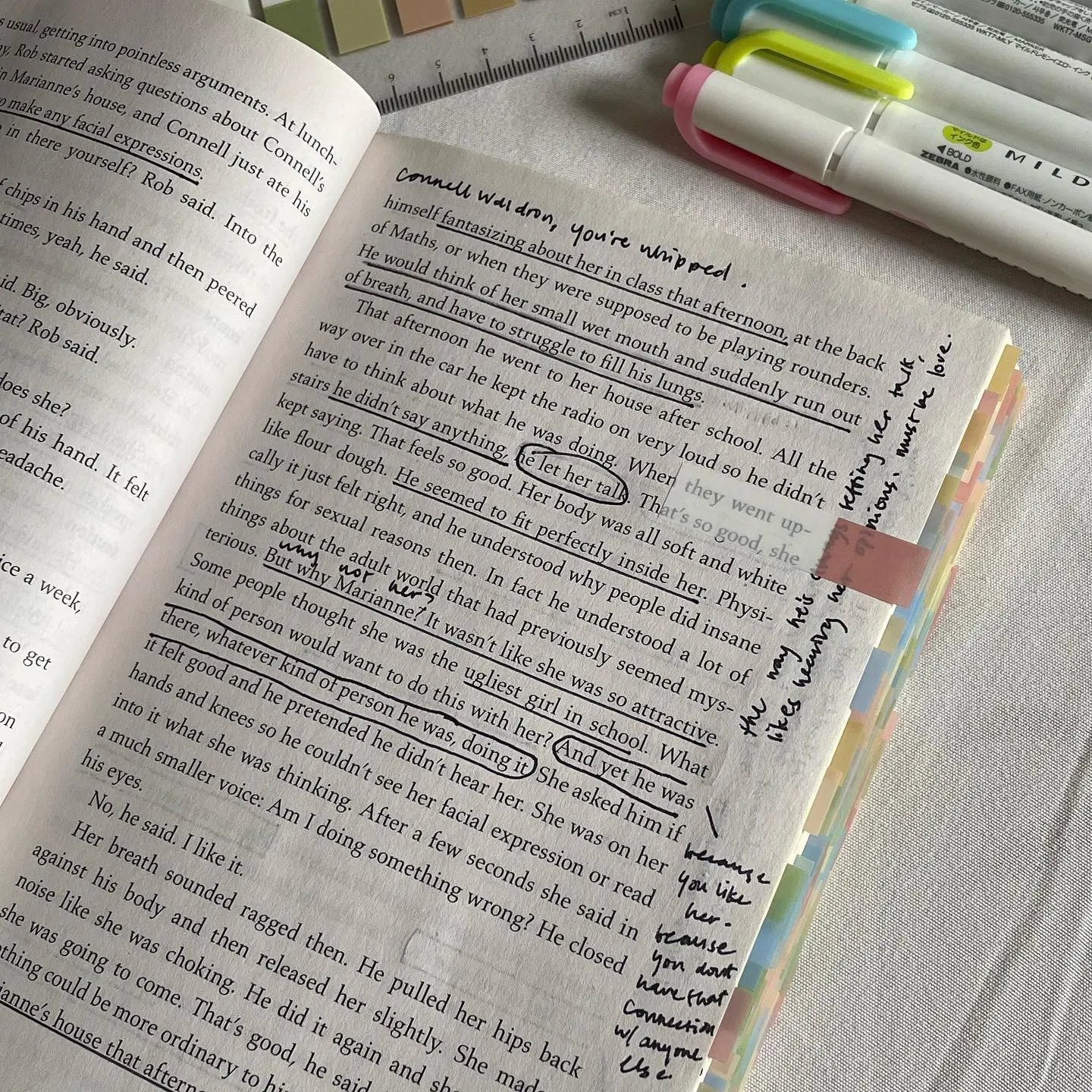
It might seem intimidating. It might feel like you need too many things to annotate effectively, especially if you follow aesthetic Bookstagram or BookTok pages.
But good news!
You don’t really need a fancy setup to begin. Here are a few basics that can really elevate your annotation game:
- Pens or pencils: Generally, just pick up whatever feels natural. Pencils are great if you’d like to be able to erase, whereas pens might be more appealing because they can really make your thoughts pop, especially colorful ones.
- Highlighters: Perfect for spotlighting key quotes or recurring ideas. These are also a great way to make certain parts of the text pop and stand out when you return to it at a later date.
- Sticky notes: These are great if you don’t want to mark up the actual pages. Alternatively, they can be incredibly beneficial if you’re the sort of person who is likely to have a lot of thoughts about the books that you read.
- Tabs or page flags: These are gold for marking important sections, color-coding themes, or just making your book look fabulously organized.
- A reading journal: Sometimes you need a bit more space to ramble, rant, or gush about a chapter. Sometimes, post-it notes just are not enough. That’s where a journal comes in, helping you to expand your thoughts beyond the page.
But really, it’s totally fine to start small. Grab whatever’s within reach (yes, even that slightly dried-out highlighter in your drawer) and go from there.
What Should You Annotate?
Ultimately, there is no way to annotate a book wrong. But if you’re a little stuck on what you’re supposed to be doing, then here are some tips.
First of all, remember that you don’t have to circle every metaphor or scribble a comment on every line. In fact, please don’t, unless you want your future self to be very confused!

Instead, why not focus on quotes that hit home? These are the lines that make you nod, laugh, or suddenly text a friend about the meaning of life.
Or maybe anywhere where you notice beautiful language, any sentences that are so well-crafted they feel like poetry.
On the flip side, you can definitely dog-ear or tab anything that made you go, “Wait, what?” You’ll thank yourself later.
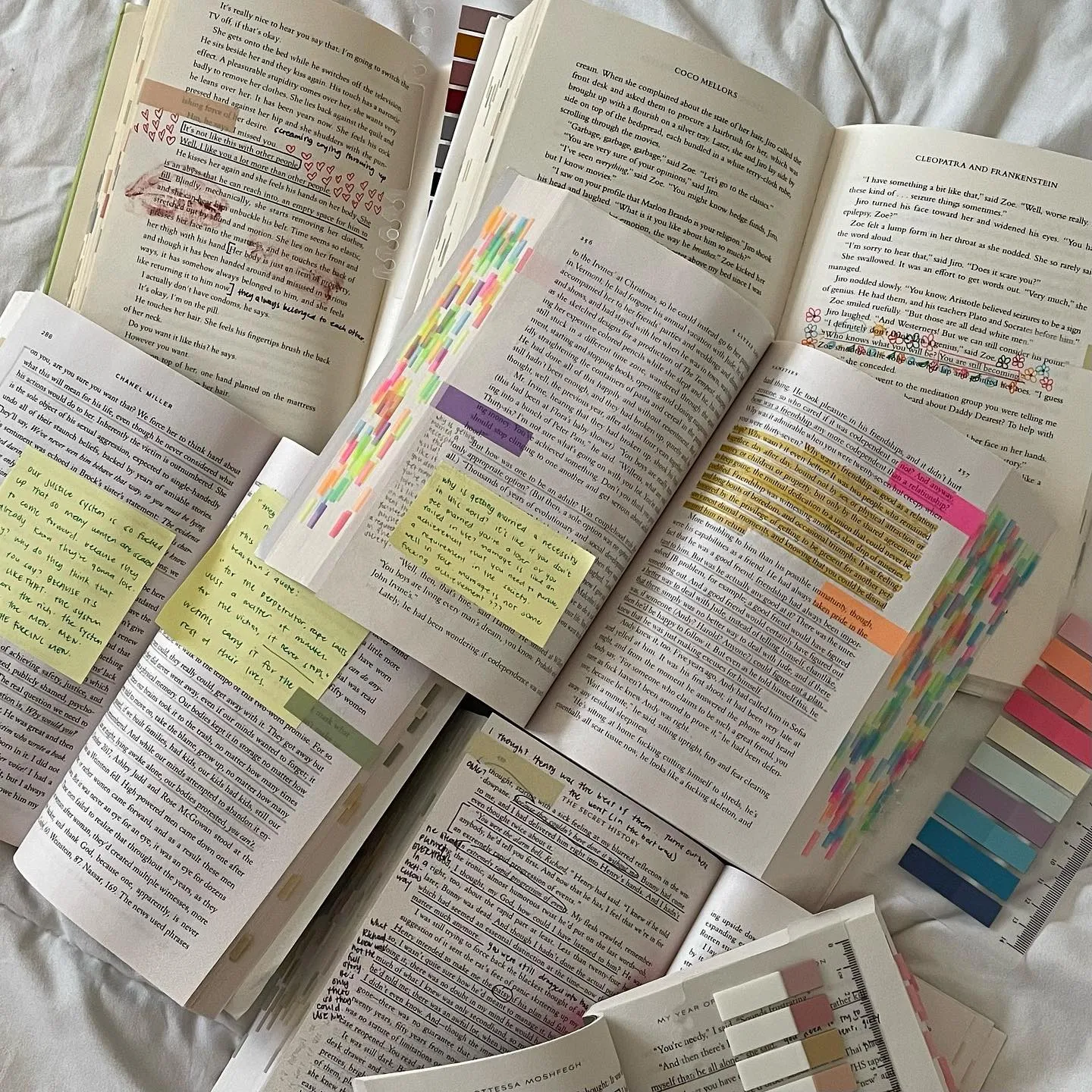
You can also note down any personal reflections or questions the writing might bring to mind. Jot down your thoughts in the margins. What does this remind you of? Do you agree? Is the character being ridiculous or totally relatable?
And, of course, there is theme-tracking. You can highlight, tab, or a recurring theme or pattern in the novel so you can come back to it at a later date.
How To Annotate
If that’s not enough, and you’re still feeling stuck, here are some more helpful tips. You really don’t need a PhD in literature to start annotating your favorite books.
First things first, you should try to read like an explorer. Treat the book kind of like a map that you’re searching for treasure. If something sparkles, highlight it.
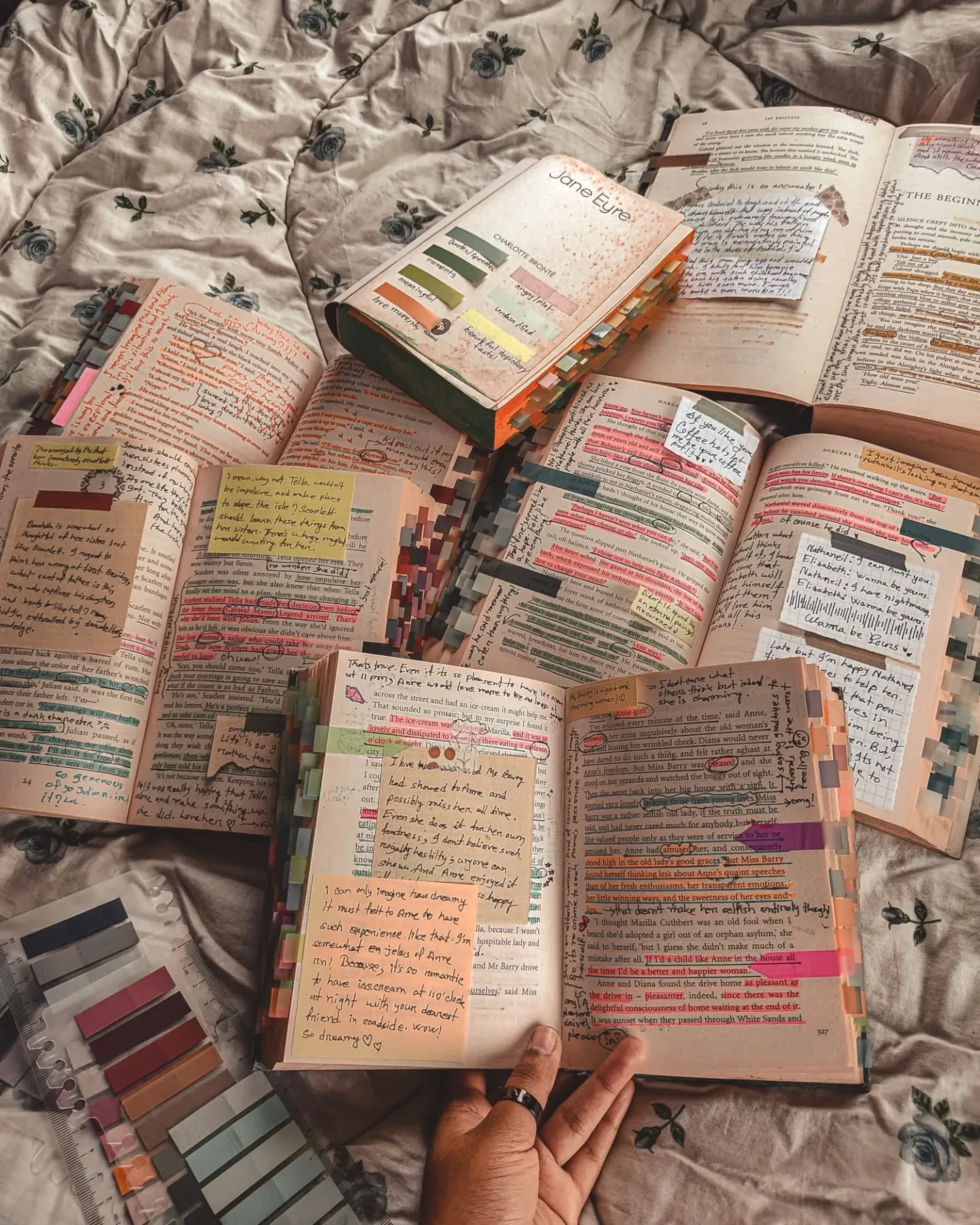
Another top tip is to be sure to make use of the margins. Think of them as space to chat, to think. Just having this space can help you to organise your thoughts.
If you’re still struggling, you can try and invent a system. Maybe you can start your favorite quotes, or a question mark, anywhere you’re confused — whatever ultimately makes sense for you!
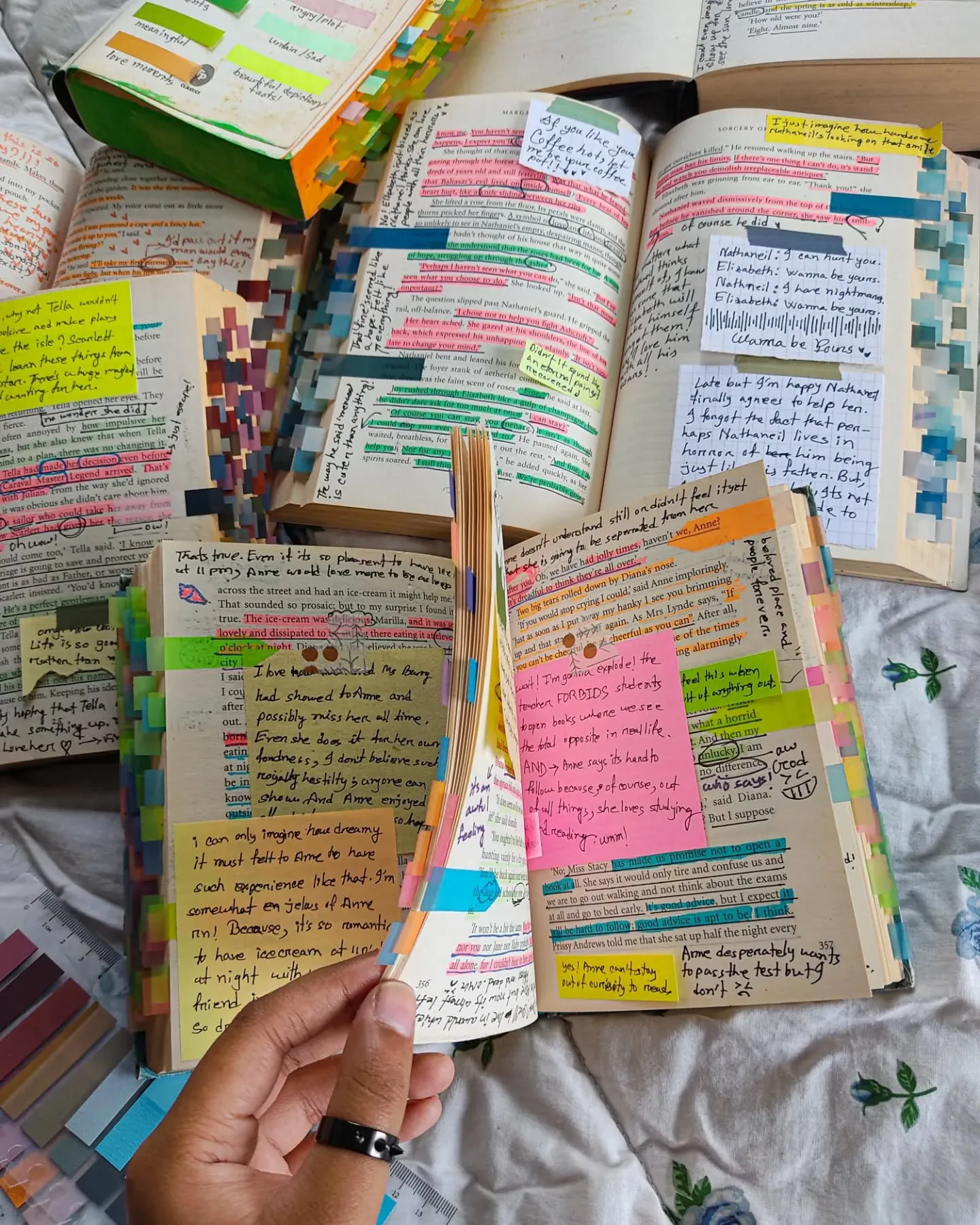
One thing lots of people swear by is pausing at the end of each section or chapter to write down their thoughts, a summary, or where they’re standing on the characters and plot so far.
What Can You Do With Annotated Books?
You might be surprised to hear this, but annotated books make incredible gifts. Yep, handing over your scribbles in the margins can warm other people’s hearts!
I mean, imagine giving your best friend your favorite novel, but with your reactions, highlights, and thoughts scattered throughout the pages. Suddenly, it’s not just a book, it’s a shared experience. Even if you read it miles apart, it becomes something you did together.

Annotated books are also great for re-reading. Your notes act like a time capsule. You’ll see what you noticed the first time around, what puzzled you, what moved you. Sometimes, you’ll even find old comments that make you laugh out loud or cringe (we’ve all been there).
And if you’re part of a book club, your notes become instant conversation starters. They help you bring more to the table and remember what you wanted to talk about.
Join our community of 1.5M readers
Like this story? You'll love our free weekly magazine.





